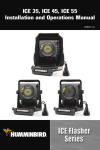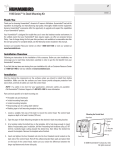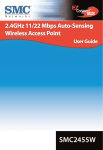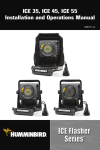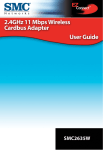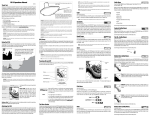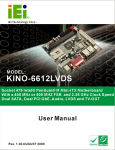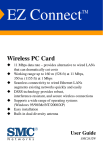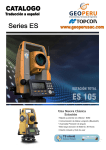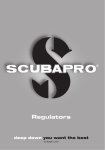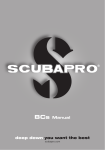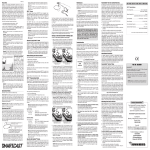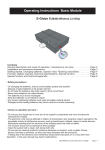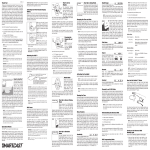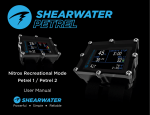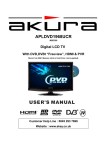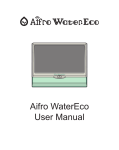Download návod XP EINS - ALBE Group sro
Transcript
XP EINS USER MANUAL Contents: 1.1 1.2 2. 3. 4. 5. 6. 7. XP EINS USER’S MANUAL.......................................................... 1 INTRODUCTION........................................................................... 2 WATCH FUNCTIONS.....................................................................3 DIVE COMPUTER FUNCTIONS....................................................5 ADVANCED TIME FUNCTIONS……………………………………..6 ADVANCED DIVE COMPUTER FUNCTIONS……………………...7 CHANGING THE SETTINGS..........................................................7 TECHNICAL SPECIFICATIONS AND MAINTENANCE.................9 1.1XP EINS USER’S MANUAL Congratulations and thank you for purchasing a SEEMANN XP EINS dive computer. As of today you will be accompanied by the latest generation dive computer using the most sophisticated technology. It is specifically designed to guarantee maximum safety for your dives. SAFETY PRECAUTIONS Just like all dive computers, the XP EINS gives the diver important data. But it does not offer the context the diver must be fully aware of and furthermore understand to interpret that data in practice. A dive computer is never a substitute for common sense, proper training and diving certification. Do not attempt to use your XP EINS without reading this instruction manual completely, including all warnings, and make sure you fully understand the use, displays and limitations of your XP EINS. Always remember that you are responsible for your own safety. WARNING! Recreational diving is a sport that involves certain risks. There is always a risk of decompression illness (DCI), oxygen toxicity and other risks related to diving with NITROX or compressed air even if following the instructions given in this user’s manual carefully. If you are not fully aware of all risks, and if you do not wish to take the sole responsibility, do not use the XP EINS. Risks are not always obvious and require training to understand and avoid. Risks can include injury or death. The XP EINS was programmed exclusively for diving with NITROX (max. 99% O2) and compressed air (21% O2). Do not attempt to dive with any gas mix other than compressed air or NITROX. Before the dive, make sure you have correctly set all the NITROX dive parameters: percentage of oxygen in the mix and limit for the partial pressure of oxygen, which together determine the maximum depth of the dive. Always be aware that if an incorrect gas mixture is entered, the decompression time calculation may be incorrect, as may be the calculation of the percentage of oxygen (PPO2) in the mix. The maximum discrepancy between the entered PPO2 and the measured PPO2 of the mixture shall not exceed 1%. Incorrect data entry can cause serious injury or death! • • • • • • Always pay attention to the visual and acoustic signals of the XP EINS; Never exceed the maximum permitted depth according to the gas mixture in use during NITROX dives. Always check the limits for the dive you are preparing for. In doing so, pay attention to the PPO2 of the gas mixture and the standard safety precautions for recreational diving (decompression illness, oxygen toxicity) As taught in all diving courses, never exceed a depth of 40 meters (130 ft.). The risk of oxygen toxicity must be considered at all times, and the XP EINS does not warn you of that risk. Make a safety stop of a minimum of three minutes at 5 meters (16ft.) in all your dives with the XP EINS. The XP EINS offers a safety stop timer that simplifies this factor, if used correctly. Any diver using a dive computer for monitoring his/her decompression status must use an individual computer. This individual computer must be used for all dives carried out within a short period. Should the XP EINS malfunction at any time during a dive, abort the dive, ascending slowly. You will still have to make your safety stop at 5 meters (16 ft.) for three to five minutes. 1 • • • • • • • • • Always ascend according to the speed displayed by the XP EINS and always carry out the necessary safety stops. Should your dive computer malfunction in any way, ascend at a maximum speed of 10 meters per minute (32 ft. per minute). When diving in a group or with a buddy, always follow the most cautious computer instructions. Never dive on your own: the XP EINS is no substitute for a dive buddy! Avoid repeated ascending and descending or reversing your profile Avoid excessive strain or stress at depth When diving in cold water, plan shorter dives Ascend as slowly as possible through the last meters after decompression or at the end of a non-decompression dive Before using the XP EINS you need to be acquainted with the signs and symptoms of DCI: Should you feel any of these signs or symptoms then seek specialized medical advice IMMEDIATELY. The earlier a diver gets medical treatment after appearance of symptoms, the more efficient the treatment will be. Do not attempt to dive with NITROX without first receiving certified training in this specialty. Nitrox and repeated dives • • • • • Between repeated dives you must wait until the CNS 02-value drops to below 40% Nitrox dives: Ensure that you have a prolonged surface interval (as for compressed air dives). Plan a surface interval of at least two hours. Desaturation of the body tissues takes some time Always choose the gas mixture that most suits the planned dive Always adhere to at least one day a week without diving Repeated dives with different dive computers: wait at least 48 hours before you dive with a computer you have not used during your prior dives High altitude dives • • Do not dive at altitudes of above 4000 metres (13,000 ft.) Your XP EINS will indicate the altitude you may not exceed after a dive, by flashing segments. Flying after diving You are strongly advised to wait at least 24 hours after your last dive, prior to flying. 1.2 INTRODUCTION We understand that you hardly can wait to take your XP EINS underwater. As such, we have divided this manual into two sections: In section one, we explain the basic functions and operations required for the immediate use of your computer. It is very important that you take the time to read these carefully before diving with your computer. In section two, the additional functions and technical specifications are described. You can choose whether to read this in advance, or simply as required. We do, however, strongly recommend reading the entire manual before using your XP EINS. Arrangement of the display and the buttons Your XP ONE is equipped with four different keys and a water contact. The function of the keys is described by the engraved word on the ring of the XP EINS housing: (A-key) MODE to change application mode (B-Key) LOG changes to logbook mode (C-Key) SELECT allows you the switch from one value to the next, and to increase the value to be changed (D-Key) LIGHT/SET enables display illumination and decreases the value to be changed, if changing settings. (E-Key) WET CONTACT is a metal contact on the left-hand side of the computer. With this contact the XP EINS recognises water entry. On the surface, the contact has no specific dive-related function, although it can be used as interface for data transfer from the dive computer to a personal computer. 2 2. WATCH FUNCTIONS Time Mode If you use your XP EINS on the surface, it will run in the Time Mode. Your computer has two different displays in this mode: Normal and Alternative. After changing any setting, and five minutes after finishing a dive it will return to this mode (Fig. 1). Displayed information in Time Mode 1) 2) 3) 4) 5) 6) 7) 8) 9) Current time Current date Battery power indicator (only displayed when battery power is low) Altitude-Symbol Nitrox-Symbol PGT-bar graph (Pressure Gas in Tissue max. 9 Bars) OLI-bar graph(Oxygen Limited Indicator max. 8 Bars) Do-not-Fly-Symbol Alarm symbol Current time By pressing the ‘Select’ (C-key) the secondary time zone, the desaturation time and the duration of the surface interval are displayed. <NORMAL> <AFTER A DIVE> Day and Month Day of the week Do-not-Fly-Symbol Nitrogen bar graph Oxygen Limited Indicator Alarm-Symbol Time Nitrox-Symbol Seconds Altitude-Symbol NITROX-Symbol <ALTERNATIVE DISPLAY> <NORMAL> <AFTER A DIVE> Desaturation time Secondary time zone Duration of surface interval Current time and date These values can be changed. Press the ‘Mode’ key (seven times) until the time is displayed with the wording ‘SET’. By pressing the ‘Select’ key the seconds-indicator starts to flash. To zero the value of the seconds-indicator, press the ‘light/set’ key. After pressing the 3 ‘Select’ key once again, you can now select the minutes-indicator, the hour-indicator, year, month, day as well as 12-24-hour display, and change them with the ‘light/select’ key. After having made the desired changes, press and hold the ‘mode’ key for about three seconds. You will then return to Time Mode. Battery power indicator If battery current exceeds 2.7 Volts, it will not be shown. If battery power drops to below 2.7 Volts, the symbol flashes and the dive computer will not change to Dive Mode. Altitude-Symbol The XP EINS measures current altitude at ten-minute intervals, and shows this with different symbols (see figure). If the computer is in Dive Mode or PC-Mode (data transfer), this measurement is disabled. The altitude symbol is not available in the following modes: Timesetup, Alarm-setup, setup of the secondary time zone, deleting of history, dive profile and logbook view mode. If your computer is located above 6000m, all measurements cease (apart from surface interval), and the word ‘Err’ is displayed. Altitude level / symbol 0 1 2 3 Altitude range 0-900m(0-2.952ft) 600-1.800m(1.968-5.904ft) 1500-2.600m(4.920-8.528ft) 2300-6.000m(7.544-19.680ft) Above 6.000m(above 19.680ft) Err Nitrox-Symbol This symbol is shown as soon as an FO2-value exceeding 21% (Air) is reached. The figure will flash during entry of the desired value. Nitrogen bar graph After a dive, the nitrogen bar graph will display your current saturation level (max. 9 bars). Automatic return to Time Mode Your XP EINS will automatically return to Time Mode if your XP EINS is in any mode other than Time Mode (such as alarm, secondary time zone, planner or logbook), and the mode is changed by pressing the ‘mode’ key after one of the other keys was pressed. In all other modes (except for dive or time setup), the computer automatically returns to Time Mode if no key is pressed for two to three minutes (or PC-Mode after 14-15 minutes). After the last automatic refresh of the display in Dive Mode, the computer will return to Time Mode after two to three minutes. Display illumination You can enable display illumination by pressing the ‘light/set’ key. To reduce the use of your battery, illumination will automatically be deactivated after three seconds. Secondary time zone The XP EINS observes current time in two time zones, a great benefit to divers who like to travel. The secondary time zone can differ by up to 23 hours and 30 minutes from the main time zone and is displayed by pressing the ‘Select’ key. The ‘DUAL’ is also displayed. To set up the secondary time zone, chose the relevant mode by pressing the ‘mode’ key until the secondary time zone is displayed with ‘DUAL’ appearing at the bottom of the screen. To increase the hour or minute value, press the ‘select’ key. To decrease, press the ‘light/set’ key. If you press and hold either of the two keys, the time will start to scroll and speed will increase. To change the date of your secondary time zone, you need to run through the entire 24 hours. No more than two days difference between the local and the secondary time zone, can be input. If you want to set up the secondary time zone as current time, switch to ‘DUAL-Mode’ (2x) and press and hold the ‘light/set’ key for about three seconds. For a repeated swap of time zones press the ‘light/select’ key for approx. three seconds. After you have made the desired changes, press and hold the ‘mode’ key for about three seconds to return to Time Mode. Remark: You cannot select or set up the secondary time zone within the first ten minutes of a dive. Pressing the ‘select’ key will result in an audible warning. 3. DIVE COMPUTER FUNCTIONS If you use your XP EINS as a dive computer, it shows all the necessary information for dives, with or without the need for decompression, for both compressed air and NITROX mixtures. 4 Dive Functions As soon as the XP EINS recognizes contact with water, it automatically turns on and ‘DIVE’ is displayed in the lower part of the screen (Fig. 1). Fig. 1 Once the XP EINS reaches a depth of below 1.5 metres (5 ft.), it starts measuring and calculating the dive. The value shown on the screen will be refreshed every second. The entire dive time is measured up to a maximum duration of 599 minutes. The computer continues measuring the time until ten minutes after surfacing. After this period, the dive is considered completed, and the data saved to the log. The current and maximum depth, remaining dive time for a no-decompression dive or necessary decompression time, ascending speed, partial oxygen pressure and water temperature are shown as numeric values during the dive. In addition two bar graphs show nitrogen saturation and oxygen exposure in the central nervous system (CNS O2). Display information The display shows two different sets of information depending on whether the dive is within non-decolimits (Fig. 2) or a decompression dive (Fig. 3). Fig. 2 NON-DECO DIVE Fig. 3 DECOMPRESSION DIVE All keys can be used to view further information that is not shown on the main screen in Dive Mode. The following will be displayed on the main screen (Fig. 2), whatever the type of dive: Current depth, maximum depth, dive time and the NITROX symbol (provided the percentage of Oxygen is greater than 22%). On the left-hand side, a bar graph offers a visual display of the level of nitrogen saturation. The bar graph is divided into nine segments. If all segments are enabled (i.e. the bar reaches the upper rim of the display), the dive is a decompression dive (Fig. 3). A similar bar graph on the right-hand side of the display shows the level of oxygen toxicity in the CNS. This bar graph, however, is divided into eight bars. The CNS value slowly increases during compressed air dives at depths of less than 40 metres. You must pay careful attention to this value during NITROX dives. More detailed information on this topic is provided in the relevant chapter. The maximum depth, PO2 value, percentage of oxygen (from 22% to 99% or AIR) and water temperature can be viewed by pressing the ‘mode’ key (Fig. 4). Fig. 4 Fig. 5 You can view the current time, date and alarm symbol (if set up), by pressing the ‘select’ key (Fig. 5). Repeated dives Two dives are repeated dives, when the second dive is carried before enough time has elapsed to entirely de-saturate the nitrogen in the body’s tissues, that was gathered in the first dive. In this case the XP EINS shows the level of the nitrogen saturation using the bar graph, as well as desaturation time (Fig. 6). Fig. 6 NITROX dives If you dive with NITROX gas mixtures, you will need to enter the percentage of oxygen in the gas mixture into your XP EINS. It is very important that the oxygen percentage of the gas mixture complies with the percentage in the tanks, as this value will be used as a basis for the calculation of decompression and oxygen toxicity. To set up the percentage of oxygen, you first need to press the ‘mode’ key 5 (press 3 times) to open ‘plan mode’ (Fig. 7), followed by ‘select’. The first value displayed is ‘Air’ (Fig. 7). You can change this by pressing the ‘light/set’ key. Every time you press the key, the oxygen percentage will increase by 1%. The start value is 21% (Air). You can enter values up to 99% and from that value on, the entry will restart with 21%. To simplify entry of this value, you can press and hold the ‘light/set’ key. The value will then change faster and stops a short time at the values of 32% and 99%. As soon as you have set the desired value, hold the ‘mode’ key down for about 2 seconds. This will change to Time Mode. Fig. 7 REMARK: The NITROX value entered will automatically reset to the value ‘Air’ at midnight (0:00 a.m.). Alarm signals Should dangerous situations arise during your dive, the XP EINS will use audible signals to make you aware of these risks: • Ascending too quickly: audible alarm every 3 seconds • Ascending too quickly will be shown by a flashing indication of the current depth for six seconds, and the word ‘SLOW’ (Fig. 8). Each signal will be accompanied by an audible alarm emitted for six seconds. • Start of the decompression phase: a 3-second audible alarm will be repeated twice • Missed decompression-stop: a 3-second audible alarm will be repeated twice • Operating limits exceeded: a 3-second audible alarm will be repeated twice • Alarm O2-Saturation: a 3-second audible alarm will be repeated twice • Alarm PO2: a 3-second audible alarm will be repeated twice • Alarm FO2-Set up: a 3-second audible alarm will be repeated twice • Alarm Saturation level: a 3-second audible alarm will be repeated twice • Alarm for incorrect (data) entry: a 3-second audible alarm will be repeated twice • Dive Mode not permitted: an audible alarm will sound until water contact is recognised. Fig. 8 Note: • • • • • The audible signals cannot be turned of by pressing the keys. If two alarms are triggered at the same time, the first is cancelled, as the second starts Pressing one of the keys disables the timer audible alarm. You can disable the timer during the first 20 seconds of the alarm. If you deactivate the alarm the symbol stops flashing but remains displayed. The alarms triggered in Dive Mode are turned off if the computer measures a depth of less than 1.4 metres (4.5 ft.) and the Ekey does not recognise water contact anymore. Alarms indicating that certain preferences or modes cannot be accessed will be suspended, as soon as the device recognises water contact. 4. ADVANCED TIME FUNCTIONS Automatic return to Time Mode Your XP EINS will automatically return to Time Mode if your XP EINS is in any mode other than Time Mode (such as alarm, secondary time zone, planner or logbook), and the mode is changed by pressing the ‘mode’ key after one of the other keys was pressed. In all other modes (except for dive or time setup), the computer automatically returns to Time Mode if no key is pressed for two to three minutes (or PC-Mode after 14-15 minutes). After the last automatic refresh of the display in Dive Mode, the computer will return to Time Mode after two to three minutes. Secondary time zone The XP EINS observes current time in two time zones, a great benefit to divers who like to travel. The secondary time zone can differ by up to 23 hours and 30 minutes from the main time zone and is displayed by pressing the ‘Select’ key. The ‘DUAL’ is also displayed. To set up the secondary time zone, chose the relevant mode by pressing the ‘mode’ key until the secondary time zone is displayed with ‘DUAL’ appearing at the bottom of the screen. To increase the hour or minute value, press the ‘select’ key. To decrease, press the ‘light/set’ key. If you press and hold either of the two keys, the time will start to scroll and speed will increase. To change the date of your secondary time zone, you need to run through the entire 24 hours. Remark: You cannot select or set up the secondary time zone within the first ten minutes of a dive. Pressing the ‘select’ key will result in an audible warning. Daily Alarm 6 The alarm clock triggers an audible alarm at a set time every day. To set the alarm time, press the ‘mode’ key until ‘AL’ appears in the lower part of the screen. Use the ‘select’ key to enable or disable the alarm. Pressing the ‘select’ key again will result in a flashing minute indicator. Pressing the ‘light/set’ key will increase the value shown. By holding the key pressed, the speed increases. After pressing the ‘select’ key once more the hour indicator starts to flash. You can again change it with the ‘light/select’ key. Pressing and holding the ‘mode’ key for a long time will take you back to Time Mode. 5. ADVANCED DIVE COMPUTER FUNCTIONS Viewing the level of nitrogen saturation A bar graph with nine LCD-bars will be shown on the left-hand side of the display during the dive. These match the colour scale to the side of the display. More segments will be activated with an increasing nitrogen saturation calculated by the algorithm. If all segments are activated, decompression stops are necessary for the dive. Sometimes the bar graph is activated on the surface when changing altitude (decrease of the barometric pressure). If all nine segments of the bar graph are active, dive mode is not available and an audible alarm is triggered when the computer comes into contact with water. View oxygen saturation – oxygen toxicity alarm The bar graph on the right-hand side of the display shows the level of oxygen toxicity in the CNS and is divided into eight bars. These are activated in relation to the diver’s exposure to an increased partial oxygen pressure. If the seventh bar is activated (Fig. 9), the entire bar graph will flash for 15 seconds and two 3second long audible alarms are triggered. If segment number eight is triggered, the same audible alarm starts and the bar graph flashes. The alarm will be saved in the log. These alarms will also be triggered on the surface, if the saturation at levels seven or eight and the water contact recognises the start of a dive. Fig. 9 Partial oxygen pressure view mode If you are at a depth in excess of 1.5 metres (5 ft.) and the partial pressure of oxygen (FO2) of the gas mixture set to a value is higher than 22%, the ppO2-display is shown. Security blockage If the operational limits of the XP EINS are exceeded or a decompression stop is skipped, the display will be blocked: All segments on the display start to flash and you have no access to the dive planner, setup or the dive modes. The blockage will be released after 48 hours. Surface interval Ten minutes after finishing a dive, the XP EINS will show the surface interval, measured in 48 hours, and shown by pressing the ‘select’ key. After a period of more than 48 hours only ‘-:- -’ will be shown (Fig. 10) Mode indicator Fig. 10 6. CHANGING THE SETTINGS Choosing the unit The default units are shown in metric measurements (metres and degrees Celsius). These can be changed to imperial measurements for depth and temperature (ft. and Fahrenheit). To set the desired units, press the ‘mode’ key until you reach ‘FO2’ mode, and hold the keys ‘select’ and ‘light/set’ pressed for five seconds. For a further change of units, repeat the process. Dive planner Your XP EINS includes a dive planner that shows the Non-Deco times between 9 and 48 metres. Pressing the ‘mode’ key until the mode ‘plan’ is shown in the lower part of the display activates the planner. The keys ‘select’ and ‘light/set’ increase or decrease the shown depth. If XP EINS for NITROX gas mixtures is set, the planner shows the permitted times with the relevant FO2 value, as well as the partial oxygen pressure at the described depth. If the partial pressure of 1.4 bars is exceeded, ‘ ’ is shown instead of minutes. If the computer is security blocked, the dive planner is not available. Reset FO2 If you use NITROX (FO2 equals or exceeds 22%) the XP EINS changes to the default setting (‘ -’) at midnight and the NITROX symbol (NX) starts to flash. If you access dive mode after resetting the FO2 an alarm will be triggered. In case you should ignore the alarm and start a dive without the setup of a new FO2-value, the XP EINS will start its calculations with a gas mixture of 99% O2 – 79% nitrogen. 7 Logbook and History Logbook mode allows you to review information on recent dives. The data will only be saved if the diver has spent more than 3 minutes at a depth of more than 1.5 metres (5 ft.). The data will be stored in the relevant order until the memory is full. Up to 30 dives can be stored, after which the oldest dive will be overwritten. Logbook Pressing the ‘log’ key takes you to logbook mode. Dive information is split into three separate displays. After showing the ‘LOG’ indicator, the display will change to ‘1-1/3’ (Fig.11) and the following information will be shown: - Nitrogen saturation with the bar graph - Oxygen toxicity with the bar graph - Date - Dive Number - Lowest water temperature - Ascent speed warning (if exceeded) - Nitrox symbol (if used) - Display I - I/3 Fig. 11 By pressing the ‘select’ key you are taken to the second logbook display I - 2/3 (Fig. 12), showing the following information: - Time in (start of dive) - Time out (End of dive) - Average depth - Bottom time - Ascent speed warning (if exceeded) - Display I - 2/3 Fig. 12 By pressing the ‘select’ key again you will access the third logbook display I - 3/3 (Fig.13), showing the following information: - Nitrogen saturation (bar graph) - Oxygen toxicity limit (bar graph) - NITROX value (if used) - Display I - 3/3 Fig. 13 Pressing the ‘light/select’ key will take you back to the display ‘I – 2/3’ or ‘I -1/3’. Failure to press any key for approximately one minute will automatically change logbook mode to Time Mode. The following warnings will be displayed in the logbook: • • • • • • • Decompression warning If you exceed your Non-Deco Time, even if ascending within limits, the decompression warning is saved and will be shown with the DECO symbol in your logbook. Alarm skipped/missed decompression If you make a mistake during one of your decompression stops, the alarm will be saved and indicated by the flashing DECO symbol in your logbook. The alarm will also be saved if the mistake was corrected by returning to the relevant depth. Alarm operating limits exceeded. If the diver has exceeded the operating limits of the XP ONE, an alarm is saved that indicates that limits were exceeded. When viewing this dive in the logbook, the segments on the screen will flash. ppO2 alarm (partial Oxygen pressure) If the alarm exceeding ppO2 is activated, even for only a short time, the alarm will be registered in the logbook and shown by a flashing ppO2 symbol. History This mode will be indicated by the word ‘HIST’ shown on the screen (Fig. 12). The entire number of dives (up to 999), the maximum depth and the total dive time (up to 999 hours and 59 minutes) are saved in the history mode. If you are using the computer for the first time, the logbook contains no data and simply shows ‘ -’. The logbook memory can store up to 30 dives for a total duration of 599 minutes for each dive. Ten repeated dives can be stored per day. The information will only be saved if the diver dives to a depth of at least 1.5 metres (5 ft.) for a minimum of three minutes. Mode view Fig. 12 Data transfer to a PC Saved data can be transferred to a computer with PC software LogBook and the relevant interface. You can order an interface and software from your authorised SEEMANN dealer. As soon as you have installed the interface on your PC with the USB connection, you can transfer your data as follows: 8 1) 2) 3) Start the software PC LogBook Switch your XP EINS mode to PC data transfer, by pressing the ‘mode’ key until the letters ‘PC’ are shown on the screen. Connect your XP EINS to the interface. Ensure that only the lower part of the housing touches the metal contacts and that the water contact is at one with the signal trigger. The LED display is not illuminated. 4) Activate the function transfer from the Tools programme menu. The window data transfer is shown and you can start transferring data by clicking on the ‘Start’ button. Further information on the installation and use of the software can be obtained from the documents supplied with the interface. The XP EINS saves data for dive profiles every 30 seconds. Checking the battery power level The battery power level is checked every ten minutes in all modes except for Dive Mode and Data Transfer Mode. If the XP EINS detects a drop in battery power the relevant symbol starts to flash. If battery power drops again, the symbol is shown continuously and Dive Mode is deactivated. 7. TECHNICAL SPECIFICATIONS AND MAINTENANCE Technical Specifications • • • • • • Operating altitude: from sea level to 6.000 metres (19.500 ft.) Maximum displayed depth: 99.9m NITROX compatibility/percentage of O2 in the gas mixture: from 21% (Air) to 99% Algorithm: Bühlmann (Swiss Model modified, 9 compartments) Operating temperature: from -5° to 45° C (23° F – 113° F) Power supply: 1 CR2032 Battery. (Battery life is approx. 2 Years in watch mode) Maintenance • • • • Do not drop your XP EINS and do not expose it to hard shocks Do not expose your XP EINS to strong and direct sun light Rinse your XP EINS after each dive with fresh water Do not use adhesives to clean the XP EINS. Battery Exchange For Battery exchange, please contact your authorized Seemann Dealer. The Warranty doesn’t cover damages, occurred by maintenance work done by personnel not authorized through Seemann. Disposal Disposal of old electronic appliances within the European Union acc. to EU Directives 2002/96/EC and EN50419 apply. Please dispose this device at an appropriate collection point and help protect our environment. SEEMANN NORTH EUROPE: Johnson Outdoors Vertriebsgesellschaft mbH Johann-Höllfirtsch-Str. 47 90530 Wendelstein Germany Contact: Phone: +49-9129-90 99 50 Telefax: +49-9129-90 99 550 [email protected] SEEMANN SOUTH EUROPE Les Terriers Nord 175 Allée Belle Vue 06600 Antibes Contact: Phone: +33 4 92 91 30 30 Telefax: +33 4 92 91 30 31 [email protected] Website: www.seemannsub.com 9









